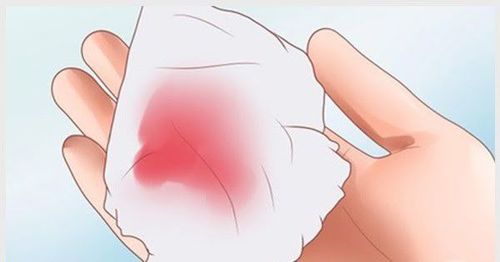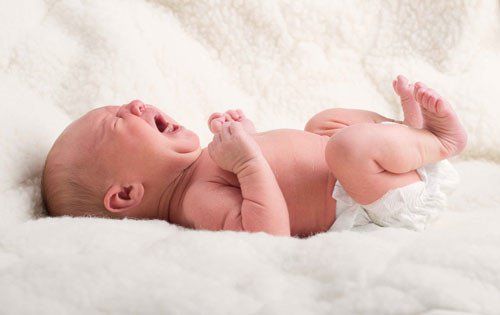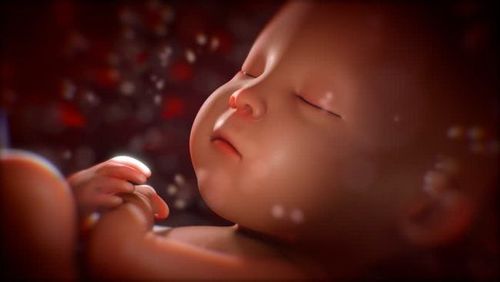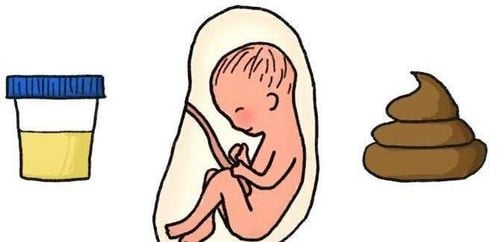This is an automatically translated article.
The article is expertly consulted by Master, Doctor Truong Thanh Tam - Pediatrician - Pediatrics - Neonatology - Vinmec Danang International General Hospital.During the first 24 hours of a new baby's life, there will be certain changes. Knowing the characteristics of the newborn in the first 24 hours such as weight, shape, body temperature,... will help parents assess that their baby has been born and develops completely normally.
1. Baby's first important milestones from birth
Newborn babies will go through 8 important developmental milestones to begin a journey of self-feeding, breathing on their own and adjusting to the environment outside the womb. They are:0 seconds first when the baby is born: The baby will cry very loudly to clean the lungs and get air into the body; 2 minutes after the baby is born: The baby relaxes, calms down after crying comfortably; 2.5 minutes after birth: Baby begins to open eyes for the first time, smacks of mouth and moves head back and forth; 8 minutes later: Baby will move more, limbs move back and forth, feel hungry and bring hands close to mouth; 18 minutes after birth: Baby is quieter and calmer because this is when he is resting; 36 minutes after birth: The baby begins to seek the mother's breast and is fed; 62 minutes after birth: Baby continues to breastfeed and needs to be fed as much as possible. This helps the mother's uterus return to its original position soon, helping the mother quickly have milk for the baby; 70 minutes after birth: Newborns get their first formal sleep. The above average times are only approximate, children can do these activities earlier or later.
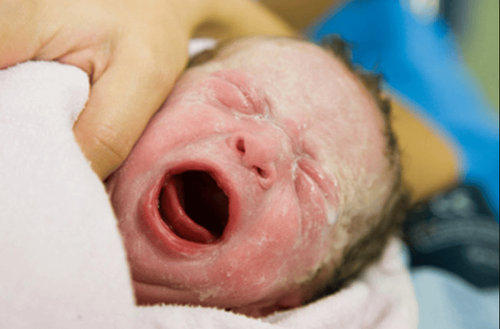
2. Characteristics of the newborn baby within the first 24 hours
2.1 Baby's weight In the first hours after birth, the baby will be exposed to the outside world with a different temperature and gravity than in the womb. Full-term newborns usually weigh about 2.9 - 3.8 kg, have bright red, bright skin and cry loudly.2.2 Baby's Shape Your baby's head may be distorted or slightly longer because of the push and pull during labor (for women who give birth vaginally). For women who give birth for the first time or are elderly, the baby's head is often more distorted. However, within 2-3 weeks after that, the baby's head will return to normal and natural, so parents do not need to worry too much.
At birth, the baby's face is often more swollen, especially the eyelids. Some babies even have eye rust, so they need to be given an antiseptic by a doctor or nurse right from the day they are born. Children's noses are also often lower than normal. However, your baby's nose will grow taller as he gets older.
2.3 Baby pooping Usually, a newborn baby's first poop occurs within the first 24 hours of life. However, there are still children who urinate and poop later. The color of your baby's urine is brick pink due to salts from uric acid, and his stools will be ash or moss green - also known as meconium. These are normal signs so parents do not need to worry.
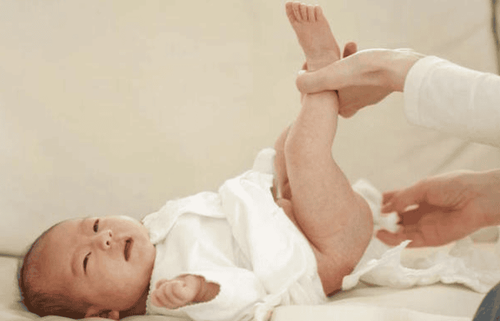
2.5 Newborn baby's sleeping pattern Newborns within the first 24 hours usually sleep a lot, only waking up when they need to go to the bathroom or ask for food. The baby still sleeps in the same sleeping position as in the womb. If at birth, the baby's head comes out first, the baby will lie in a slightly hunched position, with the chin pulled close to the chest, hands clenched and the limbs bent toward the body.
2.6 Newborn baby's skin After the first bath, parents can see that the baby's skin is still clingy. The baby's skin is also wrinkled, there are a few rice-grain-sized red spots on the body (neck, nose, eyelids), on the back or bottom there may be a blue birthmark. These features will disappear as the baby gets older.
2.7 Baby's body temperature and respiration At birth, babies don't sweat and drool yet because these glands haven't really worked. The new baby's body temperature will be the same as the mother's, then it will drop to about 1-3°C. Eight hours after birth, the baby's body temperature rises again, at 36.8 - 37.2°C. Baby breathes about 34-35 times/minute and pulse 120-130 times/minute.
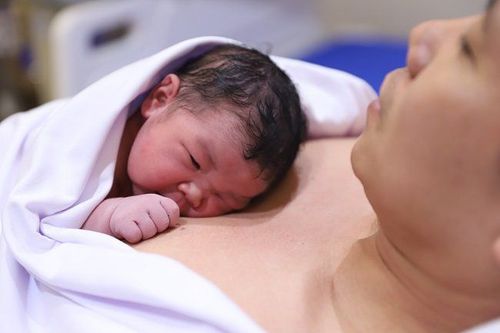
Trắc nghiệm: Thế nào là trẻ sơ sinh đủ tháng?
Đặc điểm bên ngoài của trẻ sơ sinh đủ tháng được thể hiện qua các tiêu chuẩn như: Cân nặng, chiều dài và hình thể. Theo dõi bài trắc nghiệm dưới đây sẽ giúp các bậc cha mẹ hiểu thế nào là trẻ sơ sinh đủ tháng, qua đó có thể đánh giá tổng trạng sức khỏe và sự phát triển của bé yêu nhà mình.The following content is prepared under supervision of Thạc sĩ, Bác sĩ y khoa, Ma Văn Thấm , Nhi , Phòng khám Đa khoa Quốc tế Vinmec Dương Đông(Phú Quốc)
3. Notes when taking care of a newborn in the first 24 hours
3.1 Skin-to-skin immediately after birth Skin-to-skin contact between baby and mother right after birth helps the baby avoid hypothermia and respiratory failure. At the same time, babies tend to cry less and breastfeed more often. As for the mother, skin-to-skin contact with the baby will help reduce the mother's postpartum chest pain, stress and anxiety.3.2 Breastfeeding as soon as possible Immediately after birth, breast-feeding should be done as soon as possible to stimulate the mother's milk glands to work effectively, avoiding engorgement and post-natal engorgement. The mother's colostrum within 72 hours after birth helps the baby increase resistance and have a healthy digestive system.
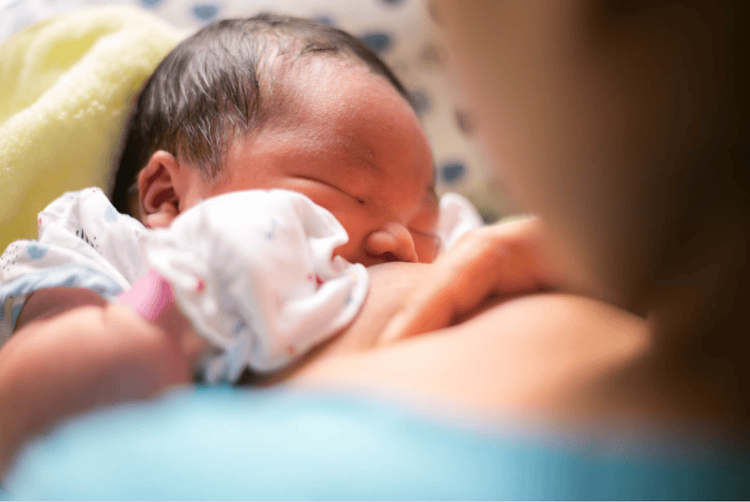
3.5 Monitor baby's defecation With normal babies, pooping and urinating will happen often after about 6-8 hours after birth. If after 24 hours of birth, the baby still has not passed meconium, parents should notify the doctor for timely handling.
Parents need to learn carefully the characteristics within the first 24 hours of a new baby to be more prepared and attentive in the process of taking care of the baby.
Master. Truong Thanh Tam has 15 years of experience in pediatrics and especially has a lot of experience in hematology, resuscitation and pediatric oncology. The doctor has participated in many national and international scientific conferences on pediatrics and participated in many short-term training courses and was certified as "Pediatric Core Instructor", by Hue University of Medicine and Pharmacy. grant. Currently, she is a Pediatrician at the Department of Pediatrics - Neonatology - Vinmec Da Nang International General Hospital.
Please dial HOTLINE for more information or register for an appointment HERE. Download MyVinmec app to make appointments faster and to manage your bookings easily.







